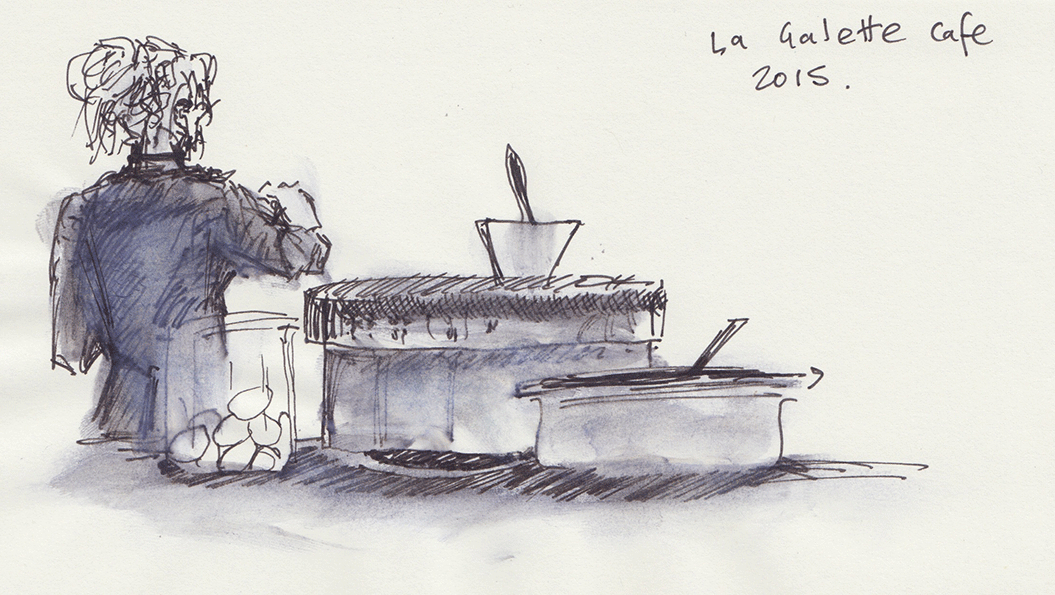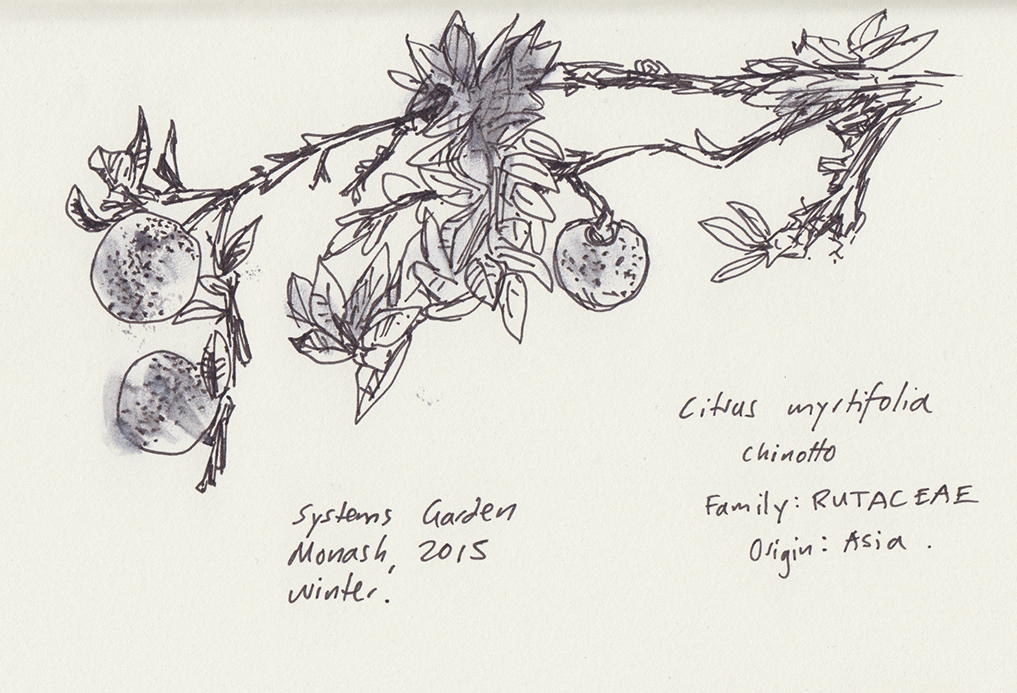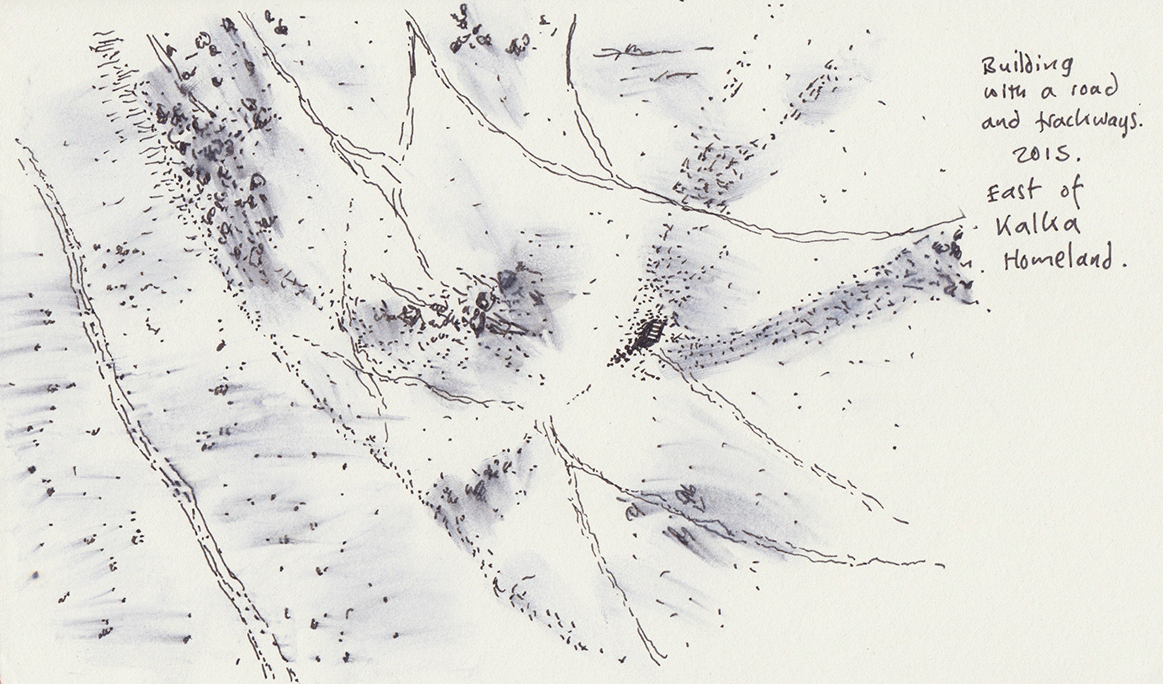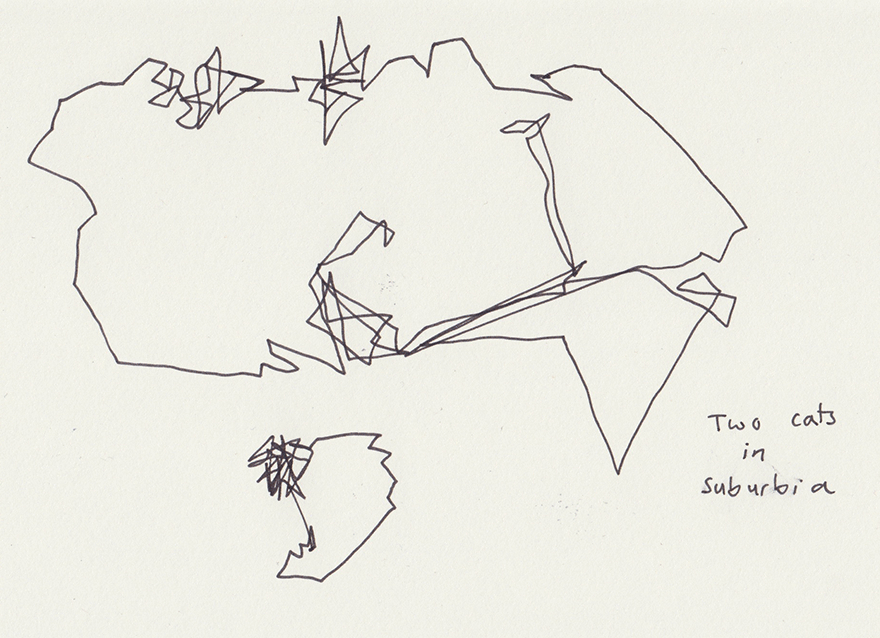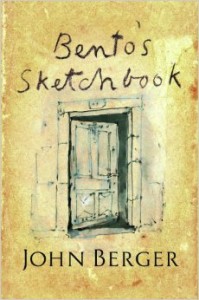 BENTO’S SKETCHBOOK
BENTO’S SKETCHBOOK
John Berger
Allen & Unwin, March 2015, RRP $29.99
How to review this book? Where to begin? In what mode to work? I have looked around at a few other reviews, and I wonder a little if most of them have missed the point. Certainly, in some instances that is to be expected. A review of Bento’s Sketchbook in a magazine of art will focus mostly on the beautiful inked and painted work, and the high quality of reproductions. Such a venue should be allowed to miss the point, or rather, they should be allowed and expected to focus on other points of special relevance.
But I wonder a little at reviews in more wordy outlets that have focused entirely on John Berger’s honest close-up examination of everyday life, or his concerned, vibrant discourse on global issues of greed and capitalism run amok. I think those reviewers have missed the particular point they might have arrived at, and how am I to go about trying to explain why, and how, and what the point was anyway.
Let me phrase this as a letter. No. Better yet. Let me phrase this as a reply in which I’ll include some of my own sketches. Should I couch this around quotes from Spinzoa (Bento, to his friends) as you have done, Mr John Berger? I suppose I might as well. If I am replying in the mode of the book, I might as well go the whole way.
I have striven not to laugh at human actions, not to weep at them, nor to hate them, but to understand them. – Spinoza
I do not mean to seem imitative of course, but in trying to reply in the mode of the work I will imitate, badly no doubt, and amateurish.
Let us get this first problem out of the way. I am no artist, Mr Berger. My sketches, such as they are, will be amateurish, the product of self-taught idle hours, not schooled in any way, and rather naive. I hope you’ll be alright with that. I’ve chosen to work in ink with spit to smudge the edges and the lines, as you have done.
Now – to return to my point – the one I took from the work – the key point, I think, is about halfway into your book. Almost exactly halfway. I’m unsure if that was the work of chance or careful planning. Naturally, I need to reread the work now, having gained a new perspective, but I appreciate that the perspective was not forced but allowed to slip in as a gradual thing, built upon slowly. A halfway thing. What it was that drew my focused thought followed on from that passage you wrote about there being two sorts of stories, those that hide and those that reveal. Shortly thereafter you casually outlined your theory that what we take away from fiction is the experience of the author’s own particular proclivities of attention. Perhaps the writer pays more attention to gardens than we ever have? Or perhaps the writer pays more attention to particular nuances of human expression? Or love? Or wonderment? Or the way rain chases leaves down a gutter? If we find we like some aspect of the writer’s allocation of attention we might retain it after finishing the book, and then the writer becomes a small part of us. We carry that writer’s attentional habits a little bit inside ourselves.
My first sketch for the review. You also dwelled on the question of what is it that compels us to start a drawing. I certainly appreciated how you noted that it is impossible to know if a drawing will work until it is done: so many of my sketches go badly and are unsalvageable. It’s nice to know I am not alone in that.
So then, what stirred me to draw a wombat skull? It sits on my desk at university. I picked it up whilst doing fieldwork for my PhD some years ago. Wombats usually die underground in their burrows, but cars and mange will kill them aboveground and if you walk about in the Australian bush of the south-east for long enough you’ll find wombat skulls. I think I was attracted to a skull for a first sketch because it hints at a story that reveals. The flesh is gone. What is underneath is revealed. I think I gathered that you might find stories that conceal more intriguing these days, but I am younger and perhaps I will grow into more maturity with age.
The curved thing at the bottom is a tooth. Wombats have ever-growing teeth and you can pull the whole tooth, with its long, curved root, out of the skull if you’re careful about it.
The skull itself draws my attention because of its shape, a sort of squashed flat version of a koala, and the signs of life. It is difficult to see in my sketch, but the skull has holes and lesions from the diseases and injuries of life. The life is gone, but the bones remember.
If men were born free, they would, so long as they remained free, form no conception of good and evil. – Spinoza
I am using rather hackneyed quotes. Yours are better, but yours are more thoroughly considered too. I suppose it is only to be expected.
After the wombat skull I sketched a cut-down scene of a young French woman in Roule Galette off Flinders Lane. There was French music playing. I was happily eating a complète galette, and thinking about how I wanted to add something more full of life to the sketches than a skull. My sketches are not as aesthetic or skilled as yours, but I hope they suffice.
Let us return to the point. The ostensible reason for Bento’s Sketchbook was to engage in a sort of imagination experiment. It was your attempt to imagine what some of the lost sketches of Baruch Spinoza might have been. It is interspersed with Spinoza’s philosophy, both in terms of the quoted passages and in terms of your own writing. That was what I started to understand a little as I read. You were paying attention to things. You were paying attention to global problems and intimate day-to-day life, but the way in which you gave attention was illuminating. You paid attention to the iniquitous system of greed we have all fallen into, but without anger. You paid attention to a woman in ill health, without pity. You paid attention to the officious nonsense of security guards in an art gallery, without resentment. I realised in reading this work, that the whole fabric of it is a very careful paying of attention.
You clever bastard.
I mean that as a compliment.
Being a biologist, I added some more living things to my sketches. Both of the following are from the Systems Garden at Monash University. The first struck me because it was a citrus tree full of fruit and yellow-green leaves in the dead of winter. I have not captured it well, but the leaves are spiky-looking and arranged in spirals on a knobbed and ancient-seeming sprays of branches. The second was simply arresting because it was a pattern of dark and glossy leaves. The human eye loves patterns.
Where there are no patterns we make them. I have thought a lot about the parallel you draw between riding a bike and tracing a pencil-tip over a paper. Both are, in their own ways, the drawing of a line upon a plane. In our day-to-day lives, we trace lines, and those lines make up the great artwork of us.
I am reminded of the division that paths are made but tracks are trodden. It is always the track that has intrigued me when walking in forests and along coastlines. Who has worn that track? And why? To where? Sometimes tracks just dwindle away to nothing when you follow them among the trees. Sometimes they go somewhere. Sometimes they become low and impossible to follow and you realise you’ve been on an animal trail and not a place for humans at all.
Incidentally, suddenly disturbing a sleeping emu whilst off in the bush is not fun for you or the emu. Sometimes tracks lead to strange places, unexpected.
This next sketch is stranger. I picked a random part of the Australian outback on a satellite map and have tried to capture the trackways that have been written into the red, desiccated landscape by humans and animals. That they form lines among dots is not coincident to the natural-born, aboriginal art of this continent. That art is sometimes a map, and sometimes the tracing of a life-path, and sometimes the abstraction of humans and animals meeting and parting and stories of meeting and parting – and all of this is not surprising when you see the Australian red landscape from a high vantage, a rocky spur or hill.
Finally, I’m ending with something more odd, perhaps more wry. Biologists like to attach GPS collars to animals and track them around, and what we have discovered is that whether you are tracking cheetahs in Iran or moggies in the backyards of suburbia, animals show distinct personalities in their daily movement. People do too, no doubt, and no doubt technology companies are already tracking phones and mapping personalities just as biologists do. Does a person range wildly, or stay-at-home? Are they adventurous, exposing themselves to changed environments, or do they prefer a set of station points, each one called at in order through the day: home and school and work, and a favourite cafe, and then work and school and home again, in that unvarying order.
I have sketched the GPS tracks of two cats. One is wide ranging, the other is not. I took these from actual GPS data, but my adaptation of the lines is rather sketchy and probably not to be trusted.
An adequate life. Living the adequate life. I don’t think I ever imagined someone taking the word adequate and making it into a thing that seems so admirable, so much a goal to be strived for.
Finally, I suppose I ought to add some compliments for the unconvinced. Bento’s Sketchbook is a rare book of excellence: for some it will be a philosophy-changing, life-altering, perspective-shifting experience, for others, it will merely add some meaning to life and refocus your attention, just a little…
All things excellent are as difficult as they are rare. – Spinoza



